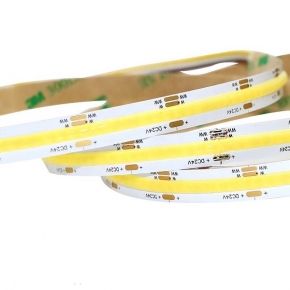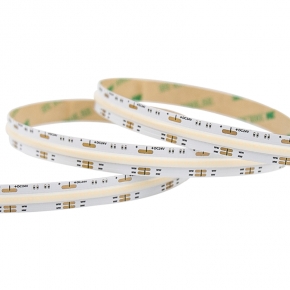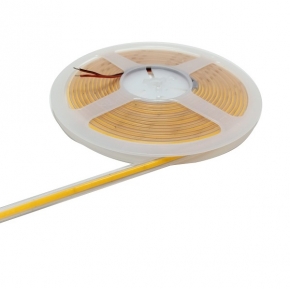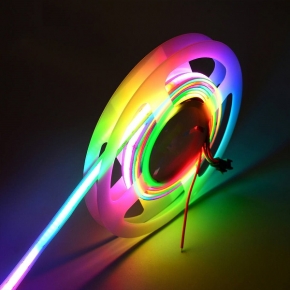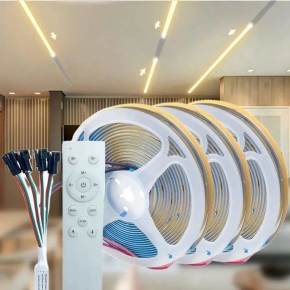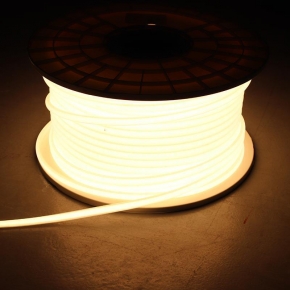Comprehensive FAQ on LED Strip Lights
Comprehensive FAQ on LED Strip Lights
Introduction
LED strip lights have become increasingly popular due to their versatility, energy efficiency, and customizable features. Whether you're a professional installer or a DIY enthusiast, understanding the ins and outs of LED strip lights is crucial. This comprehensive FAQ aims to provide you with detailed answers to commonly asked questions about LED strip lights.

LED Strip Light Basics
What are LED Strip Lights?
LED strip lights are a flexible, self-adhesive lighting solution consisting of a series of LED bulbs mounted on a circuit board. They are commonly used for under-cabinet lighting, accent lighting, and various decorative purposes.
What are the benefits of LED Strip Lights?
· Energy Efficiency: LEDs consume significantly less energy compared to traditional lighting sources.
· Long Lifespan: LED strip lights typically have a lifespan of 50,000 hours or more.
· Flexibility: The flexible nature of LED strip lights allows for easy installation in a variety of shapes and sizes.
· Customization: Available in various colors, brightness levels, and lengths to suit different applications.
Technical Specifications
What is CRI/RA?
CRI (Color Rendering Index) or RA is a measure of how accurately a light source renders colors compared to natural sunlight. Higher CRI values indicate better color rendering.
What is Lumen (lm) Output?
Lumen is the unit of measurement for the brightness of a light source. The lumen output of LED strip lights varies depending on the number of LEDs per meter and their brightness rating.
What is the difference between DC and AC LED Strip Lights?
· DC LED Strip Lights: Operate at low voltages (typically 12V or 24V) and require a power supply. They are safer and more efficient.
· AC LED Strip Lights: Operate directly from mains voltage (110-240V) and do not require a separate power supply. However, they are less common and may not offer the same flexibility as DC strip lights.
Installation and Maintenance
How do I install LED Strip Lights?
Installing LED strip lights is relatively straightforward:
00001. Prepare the Surface: Clean the surface where the strip lights will be installed.
00002. Peel and Stick: Remove the adhesive backing and attach the strip lights to the desired location.
00003. Connect Power: Connect the strip lights to a compatible power supply using the appropriate connectors.
00004. Test the Lights: Switch on the power to ensure the strip lights are working correctly.
How do I maintain LED Strip Lights?
LED strip lights require minimal maintenance. However, it's important to:
· Avoid Excessive Heat: Keep the strip lights away from heat sources to prevent premature aging.
· Handle with Care: Avoid bending or twisting the strip lights excessively, as this can damage the circuit board.
· Clean Regularly: Wipe the strip lights with a soft, dry cloth to remove dust and debris.
Troubleshooting
Why aren't my LED Strip Lights working?
If your LED strip lights are not working, here are some potential reasons and solutions:
· Power Supply Issue: Ensure the power supply is correctly connected and functional.
· Faulty Strip Lights: Check for any visible damage to the strip lights.
· Connection Problem: Verify that all connections are secure and properly made.
How do I troubleshoot flickering or dimming LED Strip Lights?
Flickering or dimming can be caused by several factors:
· Voltage Fluctuation: Ensure the voltage supplied to the strip lights is stable.
· Loose Connections: Check all connections for tightness and corrosion.
· Overloading: Make sure the power supply is not overloaded by connecting too many strip lights.
Ordering and Contact Information
How do I order LED Strip Lights?
To order LED strip lights, simply visit our website or contact our customer service team at sales2@ledwaylighting.com. Our team will be happy to assist you in selecting the right LED strip lights for your project.
Contact Information
For any inquiries or orders, please do not hesitate to contact us at:
· Email: sales2@ledwaylighting.com
We look forward to providing you with high-quality LED strip lighting solutions tailored to your needs.

